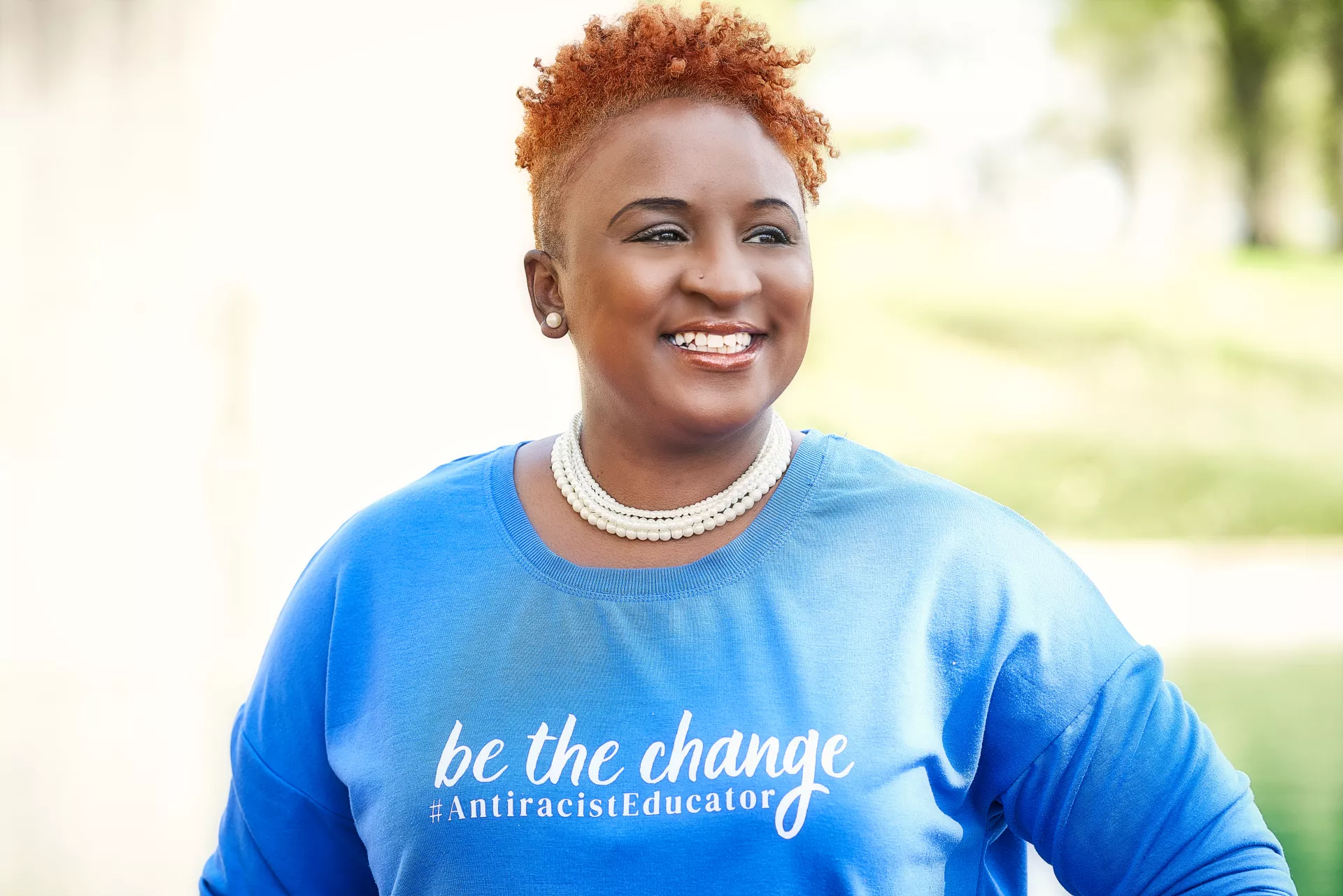I was once afraid of being myself. I feared being seen through the lens of negative stereotypes, and so for a long time, I would try to blend in, diminish myself to make those around me comfortable or stay quiet. As my involvement in NEA leadership development programs and caucuses such as NEA Black Caucus, I learned that there’s space for me wherever I go—just as I am—is the right blend that’s needed to be an activist for students and my profession.
The one program that changed my life the most is NEA Leaders of Color Pathway Project. It’s a program that helps members of color take on leadership roles in the union. I not only learned how to be a leader but also a learner and when to lean in for more understanding or to even understand my own blind spots and privileges. The program truly helped put me on a trajectory to continue to be an activist and a responsive leader.
After nearly 18 years in the classroom, I’m now a district employee with a large part of my work focusing on leading professional development on race, bias, power, and equity. We work with educators and other school staff to move our schools toward anti-racist education. The first step in this process is for people to examine their own biases, mindsets, and beliefs, as well as understand how their behaviors can dictate a student’s learning experience.
We question and explore a multitude of avenues within education, including how we evaluate great teaching, how race and disparity play into the student learning environment, and how do we build relationships with one another to help build an anti-racist workforce? We look at the curriculum to determine if it’s inclusive for every student. We even look at how we’re placing kids in classes: Who has advanced course work? Do all kids have access to AP classes? All these things, and more, come into play.
My local has also taken on some of this work. We’ve led some workshops on microaggressions and how to become an anti-racist educator. Many of our local members also participated in a book study on white fragility led by the North Carolina Association of Educators. These sessions have helped empower and equip those who want to do the transformational work required to help build stronger students, which in turn builds stronger schools and communities.
Throughout my journey in becoming an anti-racist educator, I learned that you cannot come into a school, participate in one professional development workshop, and call it a day. This work is a journey, not a destination. It’s also not done in isolation. We work in tandem with other educators. And that’s another reason why I value being a member of NEA: The community NEA has built for me has allowed me to work with other educators across the country, celebrating our triumphs and problem-solving some of our most pressing challenges—together.

